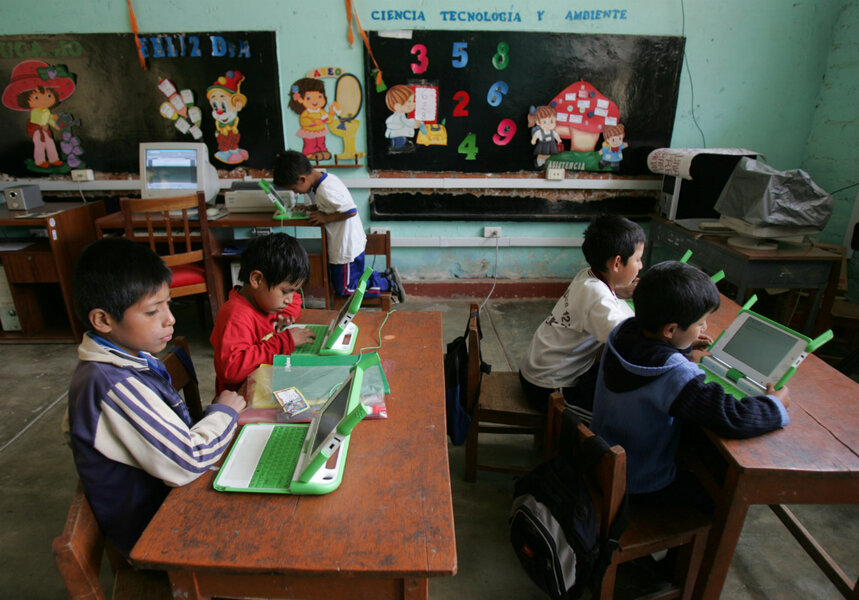As the world becomes computerized, can we bridge digital inequalities?
Loading...
| Barcelona, Spain
In the fashionable Poblenou district of Barcelona, hipsters and entrepreneurs rub shoulders with homeless people and immigrants, as the city authorities try to reduce digital inequality.
The futuristic Media-TIC building is one of several venues around the city where disadvantaged people can sign up for free courses to improve their online literacy skills under a "Barcelona, Digital City" plan launched last year.
The program, which runs until 2020, is needed because access to technology has become a “new source of social fracture” for cities in an increasingly computerized world, the council of Spain's second-largest city said on its website.
Initiatives are springing up around the globe to teach online skills, in an effort to smooth access to jobs and education, and integrate people better into society.
But questions are being raised about how well such schemes can reach those most in need.
Berlin-based nonprofit Kiron Open Higher Education provides free web-based courses for refugees with internet access anywhere in the world.
In New York, thousands of kiosks offering free Wi-Fi are being rolled out across the city under the LinkNYC scheme to help people of all income levels go online.
Meanwhile, Miami-based organization One Laptop per Child (OLPC) continues to hand out free laptops to children in developing countries, while Google promised in 2017 to teach online skills to 10 million Africans over the next five years.
The catch with some of these initiatives, however, is that they only work if people are already connected to the internet or own the necessary technology, experts say.
“Poor people are the ones most likely to be left outside of the digital sphere,” said Darrell West, director of governance studies at the Brookings Institution, a Washington-based think-tank.
New Yorkers wanting to use LinkNYC’s private internet connection, for example, need one of Apple’s latest iPhones.
Critics say this excludes low-income users who are most likely to need free Wi-Fi because they cannot afford a home broadband connection.
Digital divide 2.0
The so-called “digital divide” has traditionally referred to the gap between those who have access to computers and the internet, and those with limited or no access.
Globally, around 3.2 billion people are using the internet, according to the International Telecommunication Union, a United Nations agency.
Of the roughly 4.3 billion people who are not connected, about half live in India and China, according to the Brookings Institution.
But digital inequality can no longer be viewed simply as the gap between those with physical access to devices and those without, experts say.
In today’s world, there are many different digital divides, they argue – and various ways of trying to overcome them.
Prohibitive connection charges are a major cause of digital inequality, especially in emerging economies, said Mr. West of the Brookings Institution.
“The problem is that if you provide a free computer but don’t address high telecommunications charges, people are not going to be able to use the devices,” he added.
Not just a laptop
OLPC, a United States non-profit founded in 2005, provides children in developing countries with a low-cost, low-power computer that is connected to the internet.
More than 3 million laptops have been distributed to children, said Leah Shadle, legal associate with OLPC.
“[It] has always been an educational program, not just a laptop program,” she told the Thomson Reuters Foundation.
Schools are offering teacher training and technical training, among other services, she said. In Uruguay, OLPC’s education program has been adopted on a national scale.
According to the UN Economic Commission for Latin America and the Caribbean, around 60 percent of households in Uruguay are connected to the internet, the highest of any country in the region.
In other, richer parts of the world, the issue of digital inequality is more nuanced than it was a few decades ago, said Mark Warschauer, professor of education and informatics at the University of California, Irvine.
Amplifying difference
In the US, for instance, most people have a smartphone and a data plan, “and are pretty adept at using that,” even among urban populations with high levels of poorer non-white communities, as in Los Angeles, he said.
The issue is what digital devices people are using – and how.
Lower-income families tend to use smartphones more than laptops, and if they do have a computer at home it may be shared by several family members, Mr. Warschauer noted.
Children from wealthier backgrounds are using technology to gain knowledge, whereas children from poorer families focus more on chatting and playing, he added.
Digital media “tends to amplify existing discrepancies” in society, he said.
A physical access divide persists, however, between rural and urban areas in the US, Warschauer noted.
Many remote areas are still not connected to the internet, an inequality that needs to be dealt with at a policy level, he suggested.
West, of the Brookings Institution, urged governments to promote competition in the telecoms sector to bring down connection charges and make data services more affordable.
Being excluded from the digital sphere hurts individuals' job prospects as many companies now favor online applications, he added. Small business owners, meanwhile, often need a website to promote their goods and services, he said.
Improving people’s ability to earn by getting them connected is a virtuous circle, as greater wealth increases the likelihood of narrowing the digital divide.
“Anything a country can do to raise people out of poverty is going to bring more people into the digital world,” said West.
This story was reported by the Thomson Reuters Foundation.







